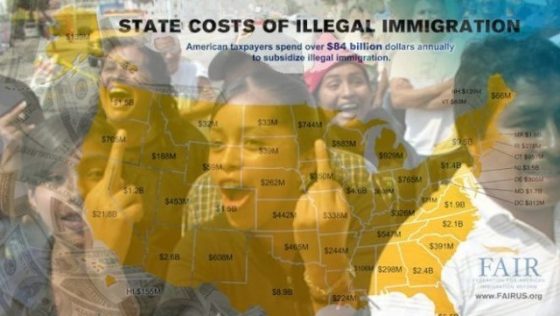Foreign nationals are increasingly gaining the ability to influence American elections more directly. They’re being granted the right to vote.
From Boston, where the city council is debating the move, to San Francisco, where noncitizens gained the right earlier this month in school-board elections, jurisdictions are looking to expand the boundaries of the electorate beyond its citizens.
***
Primer: This was compiled by Yale and MIT. Have you considered how many U.S. House Representatives exist from districts where illegals and foreign nationals are the majority? 20? 10? 40?
Context: The Democrats on the Dreamer thing were and are willing to sacrifice the interests of 325 million Americans in order to gain unconditional amnesty for 3.4 million illegal aliens.
In part: Our analysis has two main outputs. First, we generate what we call our conservative estimate, using parameter values that intentionally underestimate population inflows and overestimate population outflows, leading to estimates that will tend to underestimate the number of undocumented immigrants. Our conservative estimate for 2016 is 16.7 million, well above the estimate that is most widely accepted at present, which is for 2015 but should be comparable. Our model, as well as most work in the literature, indicates that the population size has been relatively stable since 2008; thus 2015 and 2016 are quite comparable. For our second step, recognizing that there is significant uncertainty about population flows, we simulate our model over a wide range of values for key parameters. These parameter values range from very conservative estimates to standard values in the literature. We sample values for each key parameter from uniform distributions over the ranges we establish. In our simulations, we also include Poisson population uncertainty conditional on parameter values, thus addressing the inherent variability in population flows. Our simulation results produce probability distributions over the number of undocumented immigrants for each year from 1990 to 2016. The results demonstrate that our conservative estimate falls towards the bottom of the probability distribution, at approximately the 2.5th percentile. The mean of the 2016 distribution is 22.1 million, which we take as the best overall estimate of the number of undocumented immigrants based on our modeling approach and current data. We also show the variability in our model based on the simulations for each year from 1990 through 2016.
Read the full story from NoisyRoom.net
Want more BFT? Leave us a voicemail on our page or follow us on Twitter @BFT_Podcast and Facebook @BluntForceTruthPodcast. We want to hear from you! There’s no better place to get the #BluntForceTruth.







